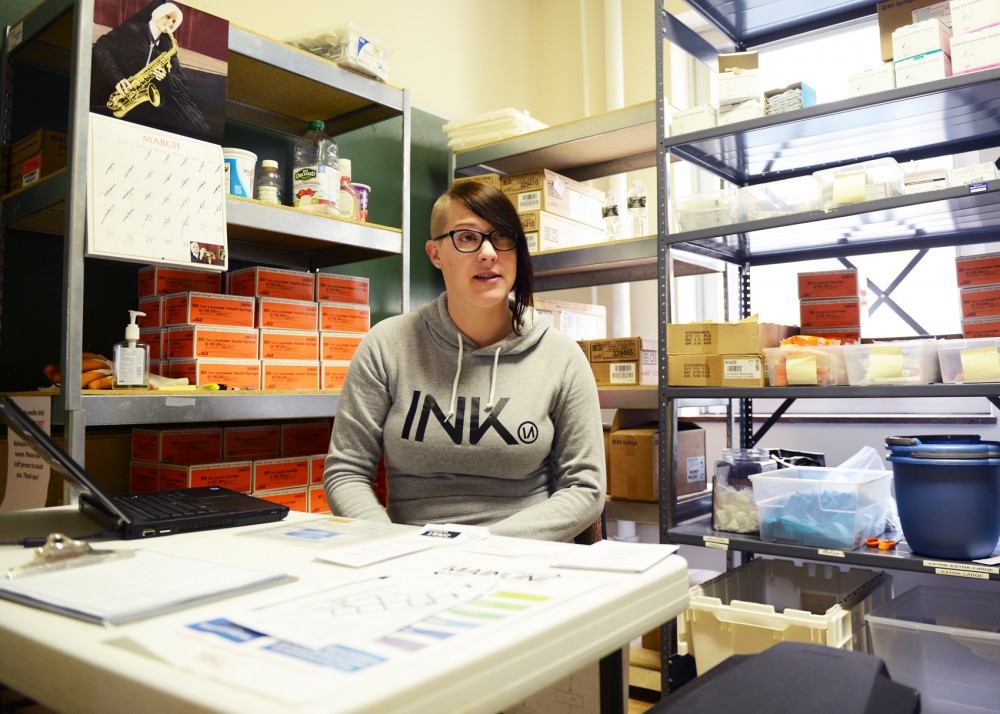This month, state officials sounded the alarm on a growing heroin problem.
Reported heroin overdoses persist even after the Minnesota Department of Public Safety warned the public of an unsettling sudden spike of potent and lethal batches of the drug circulating within the state.
Recovering users and police who have seen overdoses firsthand said they’re gruesome, and addict culture fuels the danger as many are unwilling to help one another in fear of possession charges, a felony in Minnesota.
On the University of Minnesota campus, heroin use in the past year among current enrollees is about half the national average of about 1 percent, according to Dave Golden, Boynton Health Service’s director of public health and communications.
“It would be very, very difficult to be using heroin or other harder drugs and still remain a college student,” he said.
The overdose epidemic
Heroin sales, seizures and overdoses have steadily risen in the last decade. But social media and the mobility of street dealers make it harder for police to track sales, said Sgt. Matt Severance, who supervises the Minneapolis Police Department Community Response Team.
He said police are worried those trends will only continue.
Violent crime enforcement teams track upper-level dealers in 70 of Minnesota’s 87 counties, making 333 arrests last year, said Brian Marquart, gang and drug coordinator at the Minnesota Department of Public Safety’s Office of Justice Programs.
“We’ve had a 125 percent increase of heroin seized in the state since 2011,” he said.
Still, it’s getting harder to track, Marquart said, and more heroin is coming into the state.
Meanwhile, hospitals and other organizations are trying to stem the damage of heroin use.
Emergency care providers use the drug Narcan — an opiate antidote — to revive people during overdoses.
Christy Rushfeldt, risk reduction supervisor for the Minnesota AIDS Project’s Mainline syringe exchange, said the organization has distributed 200 doses of Narcan since it started handing them out last year.
“That’s 200 lives that have potentially been saved,” she said.
Narcan is available with no prescription in Minnesota, said Dr. Emily Brunner of the Hazelden Betty Ford Foundation addiction center in St. Paul. She said studies show its availability reduces fatal and nonfatal overdoses.
Still, overdoses are on the rise in the Twin Cities and greater Minnesota. Five were reported in North Minneapolis alone on Friday, and seven deaths were reported statewide two weeks ago in connection to bad heroin batches.
Sometimes, batches are cut with prescription drugs like Fentanyl, making them even deadlier, Severance said.
Fentanyl, along with substances like black pepper and baking soda, is commonly added to heroin to make batches appear bigger and make more profit, he said.
Severance said while police know Fentanyl is increasingly mixed with heroin, they don’t track it as closely as they do heroin.
Heroin culture
Nicolette Serio, 26, is a recovering heroin addict living in a sober house in Uptown Minneapolis. She said she first used heroin at 19.
In the years since, she’s been in and out of treatment, with her longest stretch of sobriety lasting 14 months in 2013 and 2014.
To fund her addiction, Serio made money through prostitution or stealing and borrowing from her parents.
Serio said she knows many who died from heroin overdoses in both Minnesota and her home state of New Jersey.
“I’ve watched people overdose,” Serio said. “They puff up like a blowfish. They go purple, and they make these really weird gargling noises. It’s true, what they tell you in pamphlets. It’s terrifying.”
While Minnesota has protections for those who report overdoses, she said most people are high themselves when another starts to overdose and often try to get rid of the person overdosing.
“I saw my friend overdose twice. Once … I smacked the shit out of her and she came to,” Serio said. “Once, she was not [conscious], so we took her to the hospital, but when we got to the hospital she became lucid and refused to go in.”
Serio said heroin users form underground communities, and Minneapolis’ are different from New Jersey’s, where she started buying. Here, she said, people are much more discreet.
She said it’s common for dealers to get jailed in Minneapolis, and she’s found that most dealers here are middle-aged black men.
But she said that doesn’t mean minorities are the ones receiving rehabilitation, Serio said.
“There’s a difference between the group I treat [at Hazelden] and the general population,” Brunner said.
Brunner said she first heard about Fentanyl from patients a year ago. Because it makes heroin 50 to 100 times stronger than normal, its potency translates into a higher chance of overdose.
Serio said heroin users don’t test the drug before they shoot up to make sure it’s free of harmful chemicals like the diet pills or sleeping pills, which she said she sometimes cuts with her heroin before reselling it.
“People don’t care. You’re in such a rush to get that shit in your veins,” she said. “You just want to get high.”








